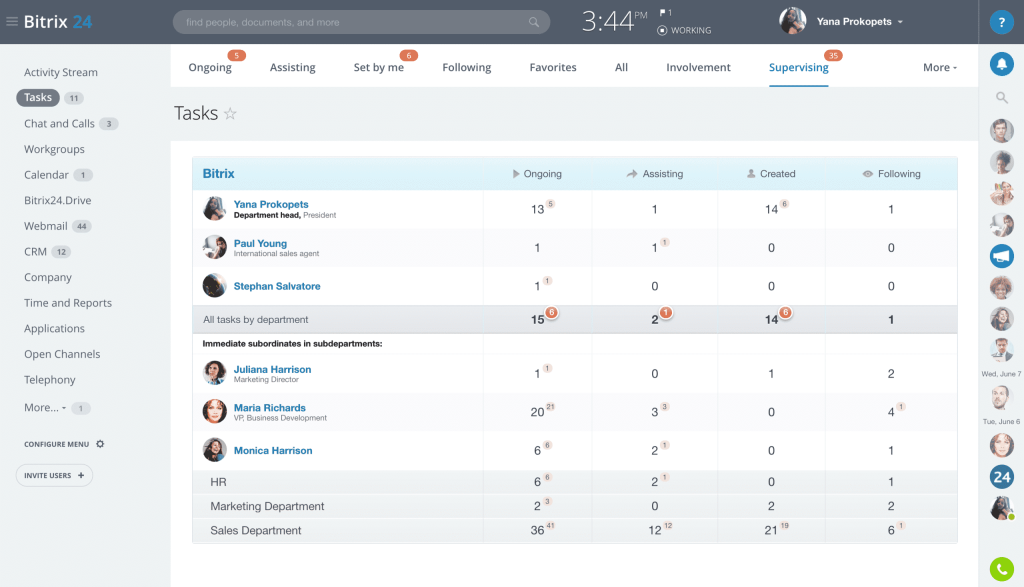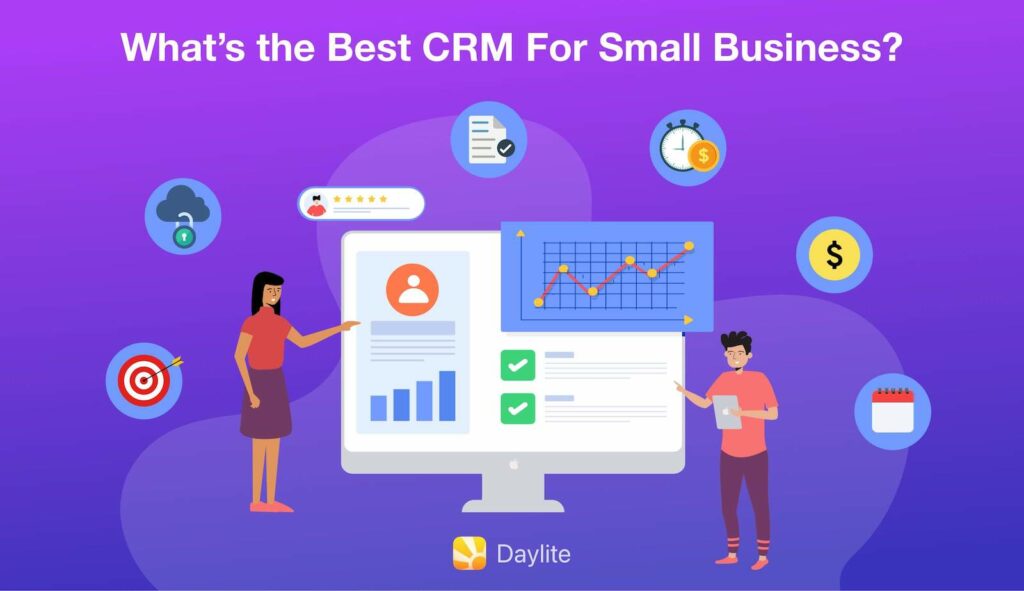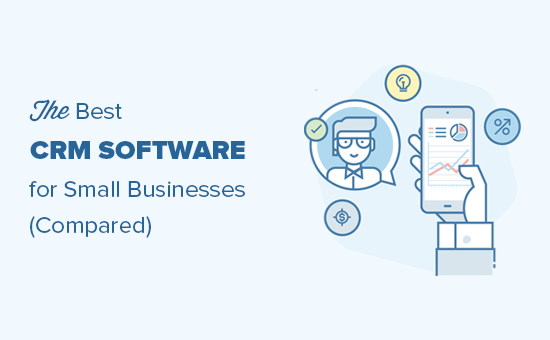
In today’s hyper-competitive business landscape, simply having a Customer Relationship Management (CRM) system isn’t enough. To truly thrive, you need to harness the power of your CRM to create dynamic and engaging marketing campaigns. This is where the magic happens – transforming data into meaningful interactions that nurture leads, convert prospects, and cultivate loyal customers. This article dives deep into innovative CRM marketing campaign ideas, providing actionable strategies to elevate your customer engagement and drive significant sales growth.
Understanding the Power of CRM in Marketing
Before we jump into campaign ideas, let’s establish the foundation. A CRM system isn’t just a digital rolodex; it’s a powerful engine for understanding your customers. It collects and organizes crucial data points, including:
- Contact Information: Names, email addresses, phone numbers, and physical addresses.
- Interaction History: Records of every interaction – emails, calls, website visits, and social media engagement.
- Purchase History: Details of past purchases, including products bought, dates, and amounts spent.
- Demographics: Age, gender, location, job title, and industry.
- Preferences and Behaviors: Information gleaned from surveys, website activity, and social media interactions.
This wealth of information allows you to segment your audience, personalize your messaging, and deliver highly targeted campaigns. The result? Increased engagement, higher conversion rates, and a stronger return on investment (ROI) for your marketing efforts. It’s about moving beyond generic blasts and crafting experiences that resonate with each individual customer.
Campaign Ideas: Unleashing CRM’s Potential
Now, let’s explore some specific CRM marketing campaign ideas to ignite your customer engagement and boost sales. These campaigns are designed to be adaptable to various industries and business models. Remember, the key is to tailor them to your specific target audience and business goals.
1. Welcome Series: Make a Great First Impression
The welcome series is your chance to make a stellar first impression on new subscribers, leads, or customers. It’s about building a relationship from the outset. This campaign typically consists of a series of emails delivered over several days or weeks. Here’s a breakdown of what it should include:
- Email 1: The Warm Welcome. Acknowledge the signup, express gratitude, and set expectations. Include a brief overview of what the subscriber can expect from your communications.
- Email 2: Introduce Your Brand. Share your brand story, values, and mission. Highlight what makes your business unique and why customers should choose you.
- Email 3: Offer Value. Provide valuable content, such as a free ebook, a discount code, or access to exclusive resources. This demonstrates your commitment to providing value.
- Email 4: Encourage Engagement. Ask subscribers to connect with you on social media, visit your website, or respond to a survey. This helps build a two-way relationship.
CRM Integration: Use your CRM to automatically trigger this series when a new contact is added to your database. Track open rates, click-through rates, and conversions to optimize the campaign over time. Personalize the emails using the customer’s name and other available data.
2. Abandoned Cart Recovery: Reclaim Lost Sales
Abandoned cart emails are a highly effective way to recover lost sales. When a customer adds items to their cart but doesn’t complete the purchase, your CRM can automatically trigger a series of emails to remind them. This campaign can significantly boost your e-commerce revenue.
- Email 1: The Gentle Reminder. Send an email within an hour of cart abandonment. Remind the customer of the items they left behind and provide a direct link back to their cart.
- Email 2: Offer an Incentive. If the customer hasn’t completed the purchase after a day or two, offer an incentive, such as free shipping or a small discount.
- Email 3: The Final Push. If the customer still hasn’t purchased, send a final email with a sense of urgency. Highlight that the items are in limited stock or that the promotion is expiring soon.
CRM Integration: Your CRM needs to integrate with your e-commerce platform to track abandoned carts. Automate the email sending process and personalize the emails with the specific items the customer left in their cart. Test different subject lines and incentives to optimize the campaign.
3. Customer Segmentation: Tailored Messaging for Maximum Impact
One of the most powerful features of a CRM is its ability to segment your customer base. This allows you to send highly targeted messages that resonate with specific groups of customers. Here are some segmentation strategies:
- Demographic Segmentation: Group customers based on age, gender, location, job title, or industry.
- Behavioral Segmentation: Segment customers based on their website activity, purchase history, or email engagement.
- RFM (Recency, Frequency, Monetary) Segmentation: Group customers based on how recently they made a purchase, how frequently they purchase, and how much they spend.
- Lifecycle Stage Segmentation: Segment customers based on where they are in the customer journey (e.g., lead, prospect, new customer, loyal customer).
Campaign Ideas Based on Segmentation:
- New Customer Onboarding: Send a series of emails to welcome new customers, provide helpful tips, and encourage them to explore your products or services.
- Loyalty Program Promotion: Promote your loyalty program to customers who have made multiple purchases.
- Product Recommendations: Recommend products based on a customer’s purchase history or browsing behavior.
- Re-engagement Campaigns: Send targeted emails to customers who haven’t interacted with your brand in a while.
CRM Integration: Your CRM should allow you to create segments based on various criteria. Track the performance of each segment to see which campaigns are most effective. Use personalization tokens to tailor the messaging to each segment.
4. Lead Nurturing: Guide Prospects Through the Sales Funnel
Lead nurturing is the process of building relationships with potential customers who aren’t yet ready to make a purchase. This involves providing valuable content and information to educate and engage them. This is where your CRM really shines, allowing you to automate and personalize the nurturing process.
Lead Nurturing Campaign Ideas:
- Educational Content: Send a series of emails with blog posts, ebooks, webinars, or other resources that address the prospect’s pain points and offer solutions.
- Product Demos: Invite prospects to watch product demos or schedule a consultation.
- Case Studies: Share case studies that showcase how your products or services have helped other customers.
- Exclusive Offers: Offer exclusive discounts or promotions to encourage prospects to convert.
CRM Integration: Use your CRM to track lead behavior, such as website visits, content downloads, and email engagement. Score leads based on their behavior to identify those who are most likely to convert. Automate the sending of nurturing emails based on lead behavior and lifecycle stage.
5. Customer Feedback and Surveys: Listen and Improve
Customer feedback is invaluable for improving your products, services, and overall customer experience. Use your CRM to collect and analyze customer feedback through surveys, polls, and feedback forms.
Campaign Ideas:
- Post-Purchase Surveys: Send a survey to customers after they make a purchase to gather feedback on their experience.
- Net Promoter Score (NPS) Surveys: Measure customer loyalty and satisfaction with NPS surveys.
- Product Feedback Surveys: Ask customers for feedback on specific products or features.
- General Satisfaction Surveys: Send periodic surveys to gauge overall customer satisfaction.
CRM Integration: Integrate your CRM with a survey tool to automate the sending and tracking of surveys. Analyze the survey results to identify areas for improvement. Use the feedback to personalize future interactions with customers.
6. Birthday and Anniversary Campaigns: Celebrate Your Customers
Show your customers that you care by sending them birthday or anniversary messages. These campaigns are a simple yet effective way to build goodwill and strengthen customer relationships.
- Birthday Emails: Send a personalized birthday email with a special offer or a heartfelt message.
- Anniversary Emails: Celebrate the anniversary of a customer’s first purchase or their membership with a special offer or a thank-you message.
CRM Integration: Your CRM should store customer birthdates and purchase dates. Automate the sending of birthday and anniversary emails. Personalize the emails with the customer’s name and other relevant information.
7. Win-Back Campaigns: Re-engage Lapsed Customers
Win-back campaigns are designed to re-engage customers who haven’t interacted with your brand in a while. These campaigns are often more cost-effective than acquiring new customers.
Campaign Ideas:
- The “We Miss You” Email: Send a simple email expressing that you miss the customer and offering a special discount or promotion.
- The “What Did We Miss?” Email: Ask the customer why they haven’t been engaging with your brand and offer them a chance to provide feedback.
- The “Exclusive Offer” Email: Offer an exclusive discount or promotion to entice the customer to make a purchase.
CRM Integration: Your CRM should allow you to identify customers who haven’t interacted with your brand in a specified period. Automate the sending of win-back emails and track their performance. Analyze the results to see which campaigns are most effective.
8. Loyalty Program Campaigns: Reward Your Best Customers
Loyalty programs are a great way to reward your best customers and encourage repeat purchases. Your CRM can be used to manage and promote your loyalty program.
Campaign Ideas:
- Welcome Emails: Send a welcome email to new loyalty program members, outlining the benefits of the program.
- Points Balance Updates: Send regular updates on customers’ points balances and remind them of the rewards they can redeem.
- Exclusive Offers: Offer exclusive discounts or promotions to loyalty program members.
- Tiered Rewards: Offer different levels of rewards based on a customer’s loyalty tier.
CRM Integration: Your CRM should integrate with your loyalty program platform. Track customer points balances, reward redemptions, and loyalty tier status. Automate the sending of loyalty program emails.
9. Cross-Selling and Upselling Campaigns: Increase Order Value
Cross-selling and upselling are effective strategies for increasing the average order value. Your CRM can be used to identify opportunities for cross-selling and upselling based on customer purchase history and browsing behavior.
Campaign Ideas:
- Product Recommendations: Recommend related products to customers based on their purchase history.
- Upsell Offers: Offer a higher-priced version of a product or service to customers who are considering a purchase.
- Bundle Offers: Offer bundles of products at a discounted price.
CRM Integration: Your CRM should integrate with your e-commerce platform to track customer purchase history and browsing behavior. Automate the sending of cross-selling and upselling emails. Personalize the recommendations based on the customer’s needs and preferences.
10. Event-Based Campaigns: Capitalize on Timely Opportunities
Event-based campaigns are triggered by specific events, such as holidays, product launches, or company milestones. These campaigns can be highly effective for driving sales and engagement.
Campaign Ideas:
- Holiday Promotions: Send emails with special offers and promotions for holidays such as Christmas, Black Friday, or Valentine’s Day.
- Product Launch Announcements: Announce new product launches and offer early access or exclusive discounts.
- Company Anniversary Celebrations: Celebrate your company’s anniversary with a special offer or a thank-you message.
CRM Integration: Use your CRM to schedule and automate the sending of event-based emails. Personalize the messages with relevant information about the event. Track the performance of each campaign to optimize your future efforts.
Best Practices for CRM Marketing Campaigns
To maximize the effectiveness of your CRM marketing campaigns, consider these best practices:
- Know Your Audience: Thoroughly understand your target audience’s needs, preferences, and pain points.
- Personalize Your Messaging: Use customer data to personalize your emails and other communications.
- Segment Your Audience: Divide your audience into segments based on their characteristics and behaviors.
- Automate Your Campaigns: Use automation to streamline your marketing efforts and save time.
- Test and Optimize: Continuously test different subject lines, content, and offers to optimize your campaigns.
- Track Your Results: Monitor key metrics, such as open rates, click-through rates, and conversion rates, to measure the success of your campaigns.
- Stay Compliant: Adhere to all relevant privacy regulations, such as GDPR and CCPA.
- Keep Your Data Clean: Regularly update and cleanse your CRM data to ensure accuracy.
- Integrate Your Systems: Integrate your CRM with other marketing tools, such as email marketing platforms and social media management tools.
- Provide Value: Always provide value to your customers, whether through helpful content, exclusive offers, or exceptional customer service.
Choosing the Right CRM Software
The effectiveness of your CRM marketing campaigns depends heavily on the CRM software you choose. Here are some factors to consider when selecting a CRM:
- Features: Ensure the CRM offers the features you need, such as contact management, lead management, email marketing, and reporting.
- Scalability: Choose a CRM that can grow with your business.
- Integrations: Look for a CRM that integrates with your existing tools, such as email marketing platforms, e-commerce platforms, and social media management tools.
- Ease of Use: Select a CRM that is easy to use and navigate.
- Pricing: Consider the pricing structure and choose a CRM that fits your budget.
- Customer Support: Ensure the CRM provider offers excellent customer support.
Popular CRM software options include:
- Salesforce: A comprehensive CRM platform with a wide range of features.
- HubSpot CRM: A user-friendly CRM with a focus on marketing automation.
- Zoho CRM: A versatile CRM with a variety of features and integrations.
- Microsoft Dynamics 365: A powerful CRM platform with a strong focus on business intelligence.
- Pipedrive: A CRM designed for sales teams with a focus on deal management.
Measuring Success: Key Metrics to Track
To assess the effectiveness of your CRM marketing campaigns, it’s crucial to track key metrics. These metrics provide insights into what’s working and what needs improvement. Here are some essential metrics to monitor:
- Open Rate: The percentage of emails that are opened by recipients. A high open rate indicates that your subject lines are engaging and your audience is interested in your content.
- Click-Through Rate (CTR): The percentage of recipients who click on links within your emails. A high CTR suggests that your content is relevant and your calls to action are compelling.
- Conversion Rate: The percentage of recipients who complete a desired action, such as making a purchase or filling out a form. This is a critical metric for measuring the success of your campaigns in driving sales and generating leads.
- Click-to-Open Rate (CTOR): The percentage of people who clicked on a link out of those who opened your email. This provides a more accurate measure of engagement.
- Bounce Rate: The percentage of emails that are not delivered. A high bounce rate indicates that your email list may need cleaning or that your email content is not reaching the intended audience.
- Unsubscribe Rate: The percentage of recipients who unsubscribe from your email list. Monitor this metric to identify any issues with your content or frequency of sending.
- Cost per Acquisition (CPA): The cost of acquiring a new customer. This metric helps you evaluate the ROI of your marketing campaigns.
- Customer Lifetime Value (CLTV): The predicted revenue a customer will generate throughout their relationship with your business. CLTV helps you understand the long-term value of your marketing efforts.
- Return on Investment (ROI): The overall profitability of your marketing campaigns. Calculate ROI by dividing the revenue generated by your campaigns by the cost of those campaigns.
Use your CRM’s reporting features to track these metrics. Analyze the data regularly to identify trends and make data-driven decisions to optimize your campaigns.
The Future of CRM Marketing
The world of CRM marketing is constantly evolving. Here are some trends to watch:
- AI-Powered Personalization: Artificial intelligence (AI) is being used to personalize marketing messages and recommendations based on customer behavior and preferences.
- Hyper-Personalization: Going beyond basic personalization to deliver highly tailored experiences that resonate with individual customers.
- Omnichannel Marketing: Engaging customers across multiple channels, such as email, social media, and mobile apps.
- Data Privacy and Compliance: With increasing regulations, businesses need to prioritize data privacy and compliance in their CRM marketing efforts.
- Voice-Activated CRM: Using voice assistants to manage CRM data and interact with customers.
Staying ahead of these trends will be crucial for businesses looking to succeed in the future of CRM marketing.
Conclusion: Mastering CRM for Marketing Success
Effective CRM marketing is no longer optional; it’s a necessity for businesses striving for sustainable growth. By implementing the campaign ideas discussed in this article, integrating best practices, and leveraging the power of your CRM, you can create meaningful customer experiences that drive engagement, boost sales, and foster lasting loyalty. Remember to continuously analyze your results, adapt your strategies, and embrace innovation to stay ahead of the curve. The journey of CRM marketing is a continuous process of learning, refining, and optimizing. By focusing on your customers and delivering value, you can unlock the full potential of your CRM and achieve remarkable marketing success.
Embrace the power of data, personalize your approach, and watch your business flourish. The future of marketing is customer-centric, and your CRM is the key to unlocking that future.




